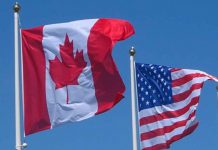 By Patrick Hunt
By Patrick Hunt
VANCOUVER – OPINION – Gospel in, gospel out. That is how I would describe the booklet “Citizen Dialogue on Canada’s Energy Future”, published by the British Columbia-based Simon Fraser University Centre for Dialogue. I was one of 30 citizens who attended the Centre’s Vancouver dialogue, which was one of five federally-funded dialogues that took place across Canada prior to a combined dialogue held in Winnipeg between October 11 – 13. The booklet was required reading for participants in this $1 million project.
The booklet made it clear that the outcome of the dialogues was predetermined from the start. All of its assumptions were slanted towards the flawed idea that carbon dioxide (CO2) is bad and anthropogenic CO2 even worse. Greenhouse gases were mentioned throughout but never defined. There was no mention of water vapour in the booklet. Yet Environment Canada itself states, “The most important naturally occurring greenhouse gas is water vapour and it is the largest contributor to the natural greenhouse effect.” Water vapour is 95% by volume of all the greenhouse gases.
The booklet ignored the fact that anthropogenic CO2 is a small fraction of the overall yearly production of CO2 because of natural sources such as rotting vegetation, volcanoes, and animals exhaling. They also ignore satellites observations that show that biomass (including food and trees) has increased by 14% worldwide, almost certainly as a result of rising CO2.
Participants in the dialogue were presented with seven options in the booklet for “Approaches for Canada’s energy future”. There was no option for participants to indicate that CO2 is not a pollutant and so not worth controlling; no option to say that CO2 has a positive impact on the natural environment and the economy; no option to reject the Paris Agreement that will almost certainly do more harm than good.
The booklet does not alert the reader to the fact that all the computer models used by the IPCC to predict global warming “run hot” compared to observations, and are therefore suspect.
And this is just the start. The scientific shortcomings of the booklet made it entirely useless as a reference source for dialogue participants.
While the SFU Centre for Dialogue staff were well crafted in their profession of consensus building, none had scientific training. They apparently had little or no understanding of the many natural factors—phenomena such as variations in water vapour and the output of the Sun—that have driven climate variability in the past. They could not address the most basic science points made by participants such as the fact that the Earth is currently in a relatively cold period. They could not even answer my simple question about the causes of the most recent glacial retreat.
My wish going into the dialogue was that the underlying climate science would be properly considered. This did not happen. My fear was that we would be encouraged to reach consensus and jump to conclusions without using evidence-based science and logic. My fears proved to be justified.
So, a million of taxpayers’ money has just been wasted to have citizens come to the government’s predetermined conclusion that fossil fuels should not be part of our energy future, and that we, the citizens of Canada, support a tax on CO2. What a disgrace.
The “Citizens Dialogues on Canada Energy Future Discussion Guide 2017” that I reference in my piece may be seen at http://www.canadaenergyfuture.ca/wp-content/uploads/2017/08/Citizen-Dialogues-on-Canadas-Energy-Future-Discussion-Guide.pdf.
Victoria, BC resident Patrick Hunt is one 30 Canadians who participated in the Simon Fraser University Centre for Dialogue’s citizen dialogue on Canada’s energy future in Vancouver.
The views, opinions and positions expressed by all columnists and contributors are the author’s alone. They do not inherently or expressly reflect the views, opinions and/or positions of NetNewsLedger.






